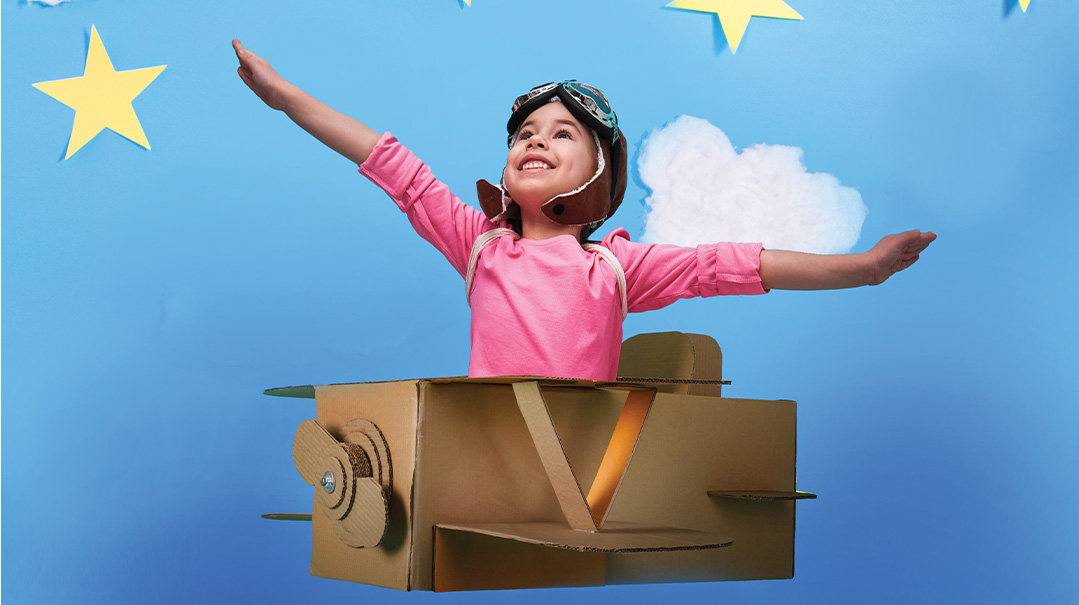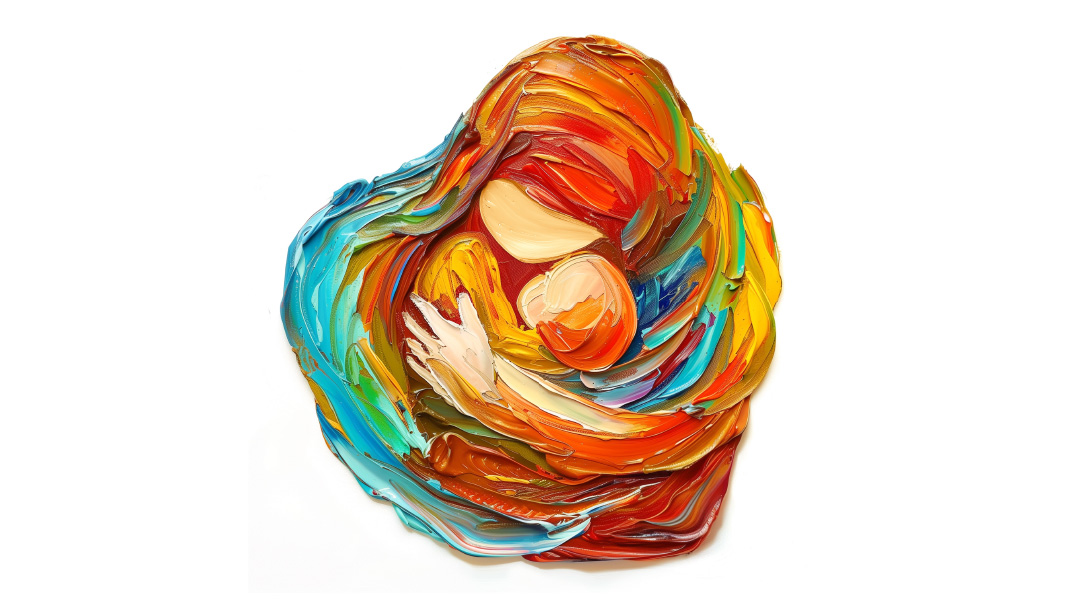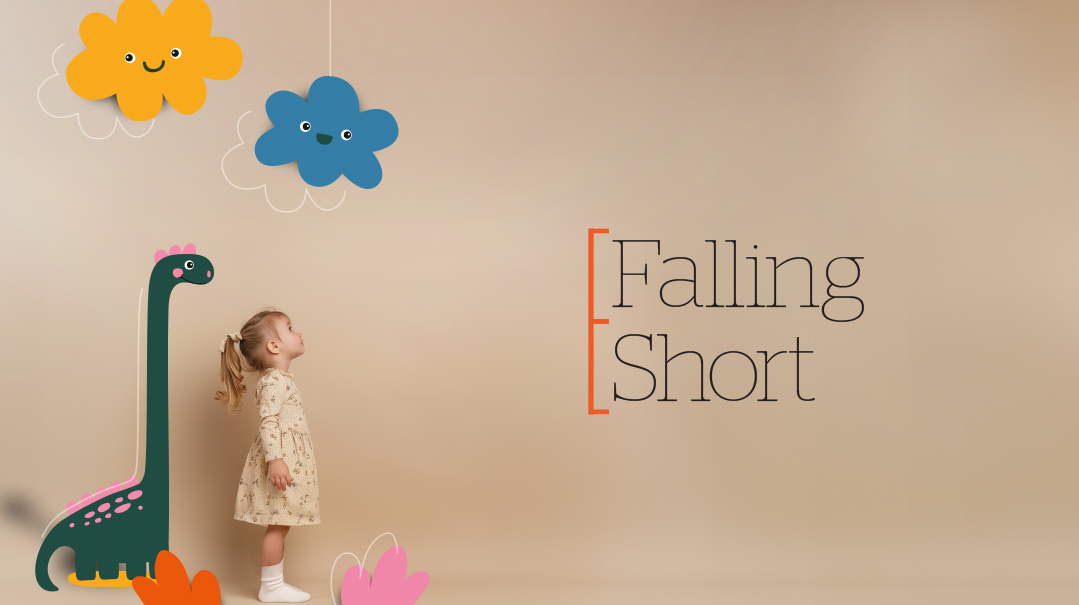Creating Creativity
| October 18, 2022One writer shares her discovery of organic ways to foster creativity in her home

When Bassi Gruen reached out to ask if I’d be interested in doing a piece on fostering creativity in children, my initial reaction was that she had the wrong writer. While my children are undeniably creative, it doesn’t have much to do with me.
When my kids were younger, my work load lighter, and my schedule freer, we did plenty of creative activities. We went to museums, created huge forts in our living room on rainy days, made small cities out of moving boxes, and did loads of arts and crafts.
These days, life has gotten very busy (with good things!), and the tolerance I have for disarray has significantly decreased. While I’m certainly a creative type, I’m also thoroughly type A. I’ve come to associate arts and crafts with clutter and mess, requiring more supervision than I prefer to supply.
Still, even though chaotic creativity can make me feel overwhelmed, we have ample arts and crafts supplies in our house, numerous musical instruments, and an overfull costume box which is in use year-round. My children are regularly signed up for extracurricular activities and participate in art programs through their school.
So, yes, my kids are creative. But it’s happening haphazardly, rather than as part of a thought-out plan.
I started wondering: Was being creative by accident good enough? That led to more questions: What does it mean to be creative? How can anyone (not just creative types) foster creativity in their children? Why should anyone even bother? Did I mention how messy it can be?
What Is Creativity, Anyway?
There’s a common misconception about creativity. Just like I immediately thought of arts and crafts when I got this assignment, most people often think of the arts when thinking of creativity. But you don’t have to be a painter or musician to be creative.
“Creativity is so much broader than what we think of it,” says Daniella Botnick, the director of the Project-Based Learning program for the boys’ division of the Hebrew Academy of Cleveland, who has over 20 years of teaching experience. “It’s not just markers and crayons, which is what a lot of people think. It’s resolving or getting around any challenging situation.”
When I attempted to find an actual definition for creativity, it was hard to pin one down. But there was a common thread in all the definitions I saw: Creativity is the use of imagination or original ideas to create something new, useful, or valuable, and the ability to open our minds to finding new solutions to problems.
Our lives require daily acts of resourcefulness and innovative workarounds, so it stands to reason that almost everyone possesses some creativity. Have you ever had to figure out a tricky carpool schedule? Arranged or decorated a living space? Needed to find a way to respectfully communicate with a challenging family member? You’ve absolutely applied creativity.
Children are naturally creative. Their imaginations are highly active, and they’re less inhibited by social conventions and logic. My three-year-old daughter will have whole conversations with toy cars, assigning them identities and feelings and jobs. She’s not constrained by the reality that cars are inanimate objects.
Many children show impressive creativity in the innovative ways they find to stall their bedtime. And, of course, anyone who’s experienced the phenomenon of a child being more interested in the box than the toy it contained has witnessed creativity at work.
It seems to me that creativity is more about the way we think about things than the actual things we create. Creativity is a mindset, and how it’s expressed depends on who we are as individuals.
Pathway to Success
Creativity is good for you. Data from a comprehensive study of nearly every individual born in 1958 in Britain shows that children who were identified as creative had significantly more success in their education and careers.
Back when these individuals were just seven years old, their teachers were asked to rate their creativity in everyday activities like freewriting, storytelling, drawing, or dramatic work. All of these success rates were found to be true even after taking into account social background, school characteristics, parental education, and parenting styles. In short, creativity in childhood can predict success later in life.
Ruth Richards, a psychology professor at Saybrook University and Harvard Medical School, discovered that expressive writing has been shown to improve immune system functioning and that older people who think more innovatively tend to cope better with aging and illness. Engaging in creative behaviors, Richards claims, makes us more observant, dynamic, conscious, non-defensive, collaborative, and brave.
Studies have also shown that creativity can lower stress or cortisol levels. The Journal of Positive Psychology states that spending time on creative goals during the day leads to more positive moods, promoting joy and optimism. Creativity is also positively related to emotional intelligence, and creativity and pretend play can help provide an environment to exercise original thinking.
Bottom line, fostering creativity can help you be a more flexible, confident, positive person with less stress and a greater ability to problem-solve. Who doesn’t want that?
Infusing Creativity
While your childhood environment certainly impacts how you foster creativity in your own children, even if you didn’t grow up steeped in creative activity, that doesn’t mean you can’t infuse creativity into your children’s lives. And it’s not even as hard as you might think.
I wanted to come up with a framework for fostering creativity. But I know that so many of us just don’t have time, so I chose to focus on creative activities that could be incorporated into an already busy and over-full family schedule. I didn’t want to do anything that required me to go to even one craft store. Instead, I looked for activities that could fit into the cracks of free time that exist in all of our days.
See what your children are interested in, and invest in that
Tehilla Greenberger, an occupational therapist who is herself creative, has written several books, and is mother to some exceptionally creative young women. One of her daughters ran a music studio and another ran a girl’s gymnastics program, both of which were very popular while open (both daughters have since gotten married). I asked her how she fostered creativity in her children.
“The main advice I’d give to parents is that a child is an individual and that the child is not necessarily a reflection of you, but a reflection of herself,” she shared. She encourages parents to look for their children’s strengths.
“You can see if your kid is musical, if she’s active, if she’s dreamy, if she likes reading. You can see what to plug into. If a kid is curious and is fascinated by nature, then plug in the enrichment that suits that child. Sometimes a child will ask for something specific. Even if you don’t think it’s going to be a great fit, let her try it anyway.”
As a musician and ardent believer in the benefits of musical training, I definitely ignored this advice when I signed up two of my boys for piano lessons. After a whole year of shlepping them to lessons, they both asked if they could stop with the piano and go back to playing soccer. Ouch.
But after a few years, my oldest son got a secondhand keyboard (which brings our total keyboard/piano count in the house up to three) and started figuring out how to play songs by ear. He later signed up for a music class in school. Now he plays all the time, but it’s the music he’s interested in, not the music I’m interested in. Meanwhile, my oldest daughter has started piano lessons and is enjoying them. Every child needs something different. Outsourcing creative activities is one option, but what about at home? How do we do that?
Give them space to create
“The number one thing — and no parent is going to want to hear this — but the number one thing that I find fosters creativity is shutting off the devices,” states Botnick. “My experience has shown that when screens are away, there’s no option but to get creative.”
She also recommends having a lot of supplies on hand, recalling how during those long early months of Covid lockdown, her girls made a huge wardrobe for their dolls out of fabric scraps, staples, and glue.
“They were adorable, and they spent hours and hours just playing and making up their own way of creating a wardrobe without any proper supplies. It’s important for kids to feel freedom to experiment and not have a formal structure to it.”
One obvious opportunity for screen-free creativity time is on Shabbos. When Tehilla asked her girls what they thought about how they fostered creativity in their family, her daughters’ response was unanimous: Shabbos afternoons.
“We were given the space and the tools to foster our creativity,” her daughter Devora said.
The Greenbergers took full advantage of Shabbos afternoons with its many unstructured hours. For quiet time, Greenberger set up stations in her girls’ room to keep them occupied while she and her husband napped. But the girls often bypassed the stations. “One of the things they loved doing was taking every single toy and putting it onto the sofa because they were ‘packing to go to Eretz Yisrael,’ ” Tehilla reminisces.
My children are typically socializing on Shabbos afternoon, but on Friday night they don’t stay long at the table, and they also don’t go to sleep. I thought this could be a good opportunity to foster some creativity. When I asked them if they would want to put on a play for us after the seudah, they were thrilled at the idea, and immediately went to work on developing a script.
We all did Kiddush and hamotzi, then the adults enjoyed the meal while the children were busy in the next room. We could hear objects being moved around and the frequent sound of footsteps as they ran to the basement to bring up various props.
After we bentshed, we went to the couches to be the audience for the show. There were costume changes, multiple characters, a concrete plot, some insightful commentary on our family dynamics, and many smiles and giggles. Full disclosure, I fell asleep halfway through, but my husband and mother, who was in town visiting, thoroughly enjoyed the performance.
The next week, my children independently decided to put on another play, which I did manage to stay awake for and enjoy.
Intentionally look away
Part of giving kids space to create is also not noticing the creative process (here’s where I talk about the mess).
“In terms of space and tools, I did a lot of looking away and purposely not noticing,” Tehilla advises. “One of my daughters used to do science experiments in her closet all the time, and I just ignored the fact that there were things growing in her closet. Some of my other kids did art projects in their room, and granted, their carpets will never be the same.
“I pretended not to notice because as much as I tried to encourage them to do art in other places, it wasn’t necessarily happening. They wanted to do it in their own rooms, and I think the fact that I gave them the freedom to do that and looked away whenever possible was really helpful for them.”
I find it very difficult to look away. In my experience, looking away has led to sharpie artwork on walls, paint splotches on tables, and in one unforgettable afternoon, an incredible number of Diamond Dotz dumped out across a newly-made bed. At the same time, I recognize that if I try to micromanage my children’s creativity, it’s not going to have the desired effect.
In the spirit of finding creative activities to do with objects I already had around my house, I took out some star-shaped ice cube trays that I must have picked up from the Target dollar section years ago and never used, and I also took out the food coloring, which had been equally ignored. Food coloring looks cool in water, and I thought it could be interesting to make colorful and fun shaped ice cubes.
Clearly I didn’t think very hard about this idea because, as you could predict, this was a messy project. A very messy project.
I put out the ice cube trays, the food coloring, and some cups of water. At first, I tried to tell my children how to do it, to encourage them to first put in the food coloring, then the water (less messy that way), but then I remembered that I was supposed to stay out of the way, so I hovered somewhat farther away, watching in trepidation for the disaster that was surely going to occur.
But no disaster occurred. Instead, my children were fascinated with the way the water and the food coloring interacted. One son put the water in first so he could watch how the food coloring spread out into each star. At one point, another one of my children realized that when they started soaking up the water that had overflowed from the ice cube trays, it dyed the paper towel with a spectacular array of colors. The natural next step was my children dropping food coloring directly into bowls of water.
My three-year-old ecstatically shouted out the colors as she saw them bloom in the bowls. “Red! Lellow! Green! I see green!!!”
On Erev Shabbos we decided to take out the ice cubes and put them into a water pitcher. The first thing I noticed was that the food coloring made the ice cubes less frozen, and when my children started taking them out of the tray their fingers started getting stained. While it was definitely cool to see the ice cubes melt (instantaneously, it seemed) into the water, after two or three ice cubes the water just turned an unappealing shade of brown.
I used my Mommy veto power to pour out the water and to leave the rest of the ice cubes untouched. Looking away will have to wait for a slightly less messy activity.
Don’t do it for them
Another crucial element of fostering creativity is actually having the children do the work of being creative. I’m looking at you, school projects.
While it’s natural to want to help our children do well in school, and to assume that a beautiful project is going to lead to a better grade, it is, unfortunately, missing the point of the assignment.
“They learn a lot through the process of doing it themselves, and their work becomes refined through the process,” says Tehilla. “The goal isn’t to have a perfect beautiful painting that you helped them do, but for them to have the skills and the confidence to do it themselves.” She notes that of course a parent should provide the support and tools, but the idea and its execution should be done by the child.
“I think we all have to remember that we were already kids, and we have to allow our kids to become the competent adults that we’ve become. To do that, we have to allow them to do their own work.”
How do our children gain the confidence to do things on their own? And how do we develop the patience to let them?
“Encourage problem solving, encourage kids to solve their own issues and to figure it out,” Tehilla continues. “Because when they’re figuring things out, they can come up with creative solutions that you might not have even thought of, which makes them feel super proud of themselves.”
They have an actual motto in their family: “Greenbergers are problem solvers.” Whenever her kids told her that something was difficult, that they couldn’t figure something out, she referenced the family motto. Over time it became routine for them not to get stuck. If plan A doesn’t work, what’s plan B? And if plan B doesn’t work, what’s plan C? There was never an option to just shut down when plan A didn’t work.
This is definitely not how my household was currently operating. It’s infinitely easier to just solve the problem, answer the question, or troubleshoot the issue myself. But after hearing about this family motto idea, I had to try it.
It also tied in nicely with something Botnick had shared about how empowering kids to be in charge of something could spur creativity. “There’s an importance of having a real purpose for creativity. Yes, sometimes it’s for play, but if you tell them you’re going to do something with it, like teach other kids, or make a video, in my experience, a public display elevates everything.”
I told my kids that we were going to come up with a family motto and crest. The initial brainstorming session led to a barrage of self-deprecating comments centered around our ability to bicker and some of our less stellar family middos, but then my children thankfully started listing many of the good qualities we have.
One contender for a motto was “Silvers don’t quit,” but as I’ve quit many things myself and believe there is value in knowing when to stop something, we didn’t go with that one.
We settled on “Silvers find solutions” (yes, this feels entirely plagiarized from the Greenberger family motto. All I can say is that imitation is the highest form of flattery). We also chose a silly second motto, “smarts and knowledging,” so that we would remember not to take ourselves too seriously.
My oldest son designed a crest with this motto featuring wings, stars, and also the abbreviation of the motto in the background. After we had established this as our family motto, it came in handy whenever something came up. Whether it was a social dilemma with friends, an argument between siblings, or even difficulty finding a pair of shoes, I would just say “Silvers find solutions!” and often my children didn’t even need my help to find a solution.
It’s become a regular refrain in our house, and I often hear my kids say to each other “SFS!” and, also, “Smarts and knowledging!” followed by laughter. It’s gratifying.
Creativity Everywhere
The biggest takeaway from this project was that creativity seems to be about providing the framework and then getting out of the way so it can happen. I’ve never been great at delegating and not being in control, so this does require thought and effort on my part, but the results are absolutely worth it.
I also learned that while I don’t anticipate my schedule becoming any less hectic, it doesn’t mean I can’t be intentional about infusing a little more creative activity into my children’s lives.
Over the months that I was working on this project, I was able to play many word games with my children while making dinner, going on hikes, and driving in the car. I invited them to do more in the kitchen with food prep. Rather than reflexively answering their questions, I’d first ask them what they thought the answer was. Instead of being so focused on getting things done, I shifted my focus to how I could bring my children into the process in a collaborative and creative way.
I still prefer my couch cushions on the couch instead of in the shape of a fort, but instead of seeing a hassle, I can now see the beauty and benefits of creativity in action.
Supplies To Have On Hand For Creativity
All you really need are cardboard boxes, but it’s also helpful to have:
Posterboard
Scrap paper
Coloring supplies
Scissors, glue, tape
Egg crates
Boxes, always boxes
Fabric scraps
Stickers
Stapler
Costumes
Popsicle sticks
Paper towel/toilet paper rolls
Empty cans and jars
Buttons
Bottle lids
Washi tape
Painter’s tape
Old magazines
Tissue boxes
You can keep them all in a big Rubbermaid container or whatever is convenient for your household
Easy Creative Activities Any Busy Mom Can Do
go for a walk and notice everything around you
play word puzzles/sudoku
build something with Lego
play word games
make a racetrack out of painter’s tape
take a family picture
decorate baked goods
take a new route to school/work
do pass the drawing
make art with nature
cook/bake together
make paper airplanes
go on a scavenger hunt
make puppets
play logic games
make a collage
(Originally featured in Family First, Issue 814)
Oops! We could not locate your form.







